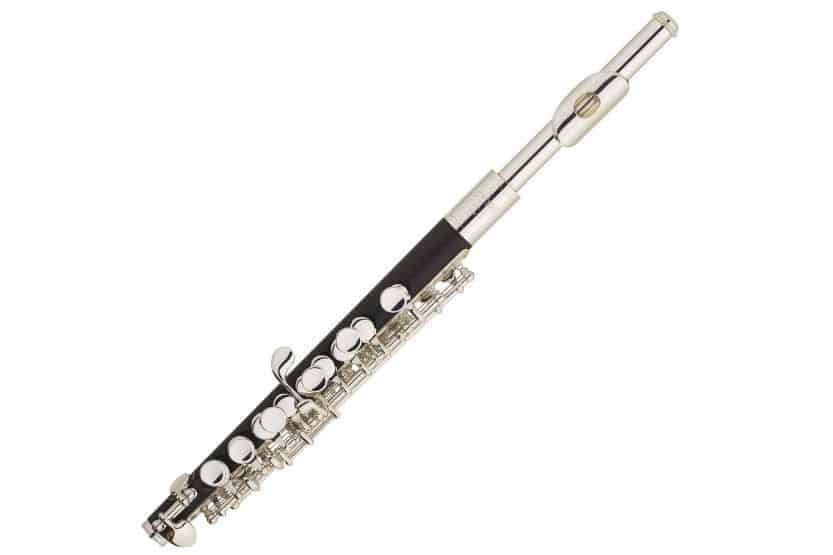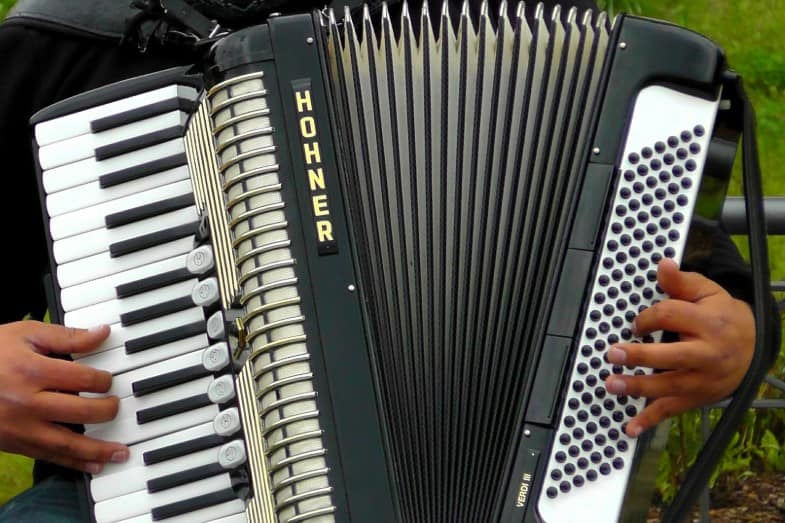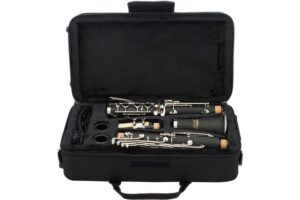You may be familiar with the flute, but perhaps you are not aware that there are several different types of flutes. The sound of the flute is one of the most soothing sounds that you can hear. What are the different types of flutes?
The five different types of flutes are the C flute, the piccolo, the alto flute, the Eb soprano flute, and the bass flute. These flutes are generally played in the same way. So it is not unusual for a flutist to play all these different kinds of flutes.
The most popular type of flute is the C flute, also known as the Western concert flute. Usually, flutists tune to the key of C. A flutist can perform as a solo artist or as part of an orchestra.
Read on to learn more about the different kinds of flutes, how they differ from each other, and other interesting details about them.
Also, we hope you find the links here useful. We may get a commission if you purchase something through a link on this page, so thank you!
Different Types of Flutes
At present, there are at least five different types of flutes. These flutes include the C flute, the piccolo, the alto flute, the Eb soprano flute, and the bass flute.
The C flute, also known as the Western concert flute, is the most popular type of flute. In general, the flutes can be played in almost the same manner. Thus, a flutist is usually capable of playing all types of flutes.
Records of history say that the flute has been with us for a very long time. The earliest flutes were just simple tubes of bones or canes that people blew air into. As time went on, inventors of musical instruments created different kinds of flutes made of different materials.
We have five different kinds of flutes, namely the C flute, the Piccolo, the Alto flute, the Eb Soprano flute, and the Bass. Since these flutes are played almost the same way, most flutists can play all these five different kinds of flutes.

I guess that the flute you are familiar with is the C flute, formally called the Western concert flute.
Flutists usually use C flute when playing in an orchestra, a band, or solo.
Let us discuss these flutes one by one:
1. C Flute
Click here to see this Glory Closed Hole C Flute With Case on Amazon.
Flutists usually use the C flute. That is why it is the most widely known of all the flute family. Aside from this, it is also considered the most ideal for beginners.
Flutists use this flute when they play in orchestras, concert bands, marching bands, and sometimes jazz bands.
The sound produced by a C flute is fit for soloing. That means the sound is a natural solo voice. This is probably why it was named soprano since this particular voice tone is aptly fit for solo performances.
But it can also blend with almost all the band instruments. It won’t blend well with the oboe, though they both have smooth and soothing sounds. They are octaves apart. While oboes go stronger in the low range, flutes grow weaker.
But as flutes grow bolder in the higher ranges, oboes get timider. Flutes will be more inconsonant with the bassoon, in unison, or an octave. Their similar timbers always produce soothing and relaxing sounds.
James Galway, a famous flutist, played this melancholy music using a C flute.
2. Piccolo
Click here to see this Eastar Piccolo Instrument for Beginners Students on Amazon.
The piccolo is the smaller version of the C flute. Only half as long, it produces notes that are one octave higher than the C flute. C flutists will use the same fingering techniques if they are playing the piccolo.
While a piccolo may look similar to a C flute, you will see their closer inspection differences. The first thing you’ll notice is its material construction. Most flutes are made of metal, while most piccolos are made of wood.
Being of high register, if piccolos were made of metal, they would produce high piercing sounds that are highly irritating to the ears. It will not be able to blend well with the other orchestra instruments.
The piccolo is also conical in shape. Originally, the flute also had the same conical shape, but later, a straight body was adopted and established in the 19th century.

A tapered shape is more suited for high pitched instruments, which the piccolo is. Another difference is that a typical piccolo doesn’t have a lip plate in the embouchure hole while the typical C flute has.
Today, you can see the piccolo as part of orchestras, flute ensembles, marching bands, and concert bands. The silver or metal piccolo is what you will usually see in marching bands.
For symphony orchestras and concerts, the piccolos you will see are the wood or plastic ones.
3. Alto Flute
If you hear a mellow, distinct tone in the lower pitch range, you are probably listening to an alto flute. This instrument produces that kind of sound because its body is significantly longer and thicker than the C flute. To play it, the flutist needs to have great lung power.
This flute enhances the dynamic presence of the lower notes.
The alto flute had undergone many developments before it was able to produce this kind of sound quality. In its developmental stages, flute makers tried to increase its range. They tried to develop flutes that can produce lower Bb, A, Ab, G, F, Eb, and C.
Stretching its length means extending the distance between each keyhole, as well as the embouchure hole. This made it difficult for flutists in those developmental stages to play the instrument.
Eventually, Theobald Boehm developed and created a flute that was in precise proportion to the C flute. He created a consistently beautiful sound from this flute, which is now the standard alto flute.
Here’s one alto flute player that will remind you of Harry Potter.
This instrument produces sounds in G, one fourth below that of the C flute. It transposes music. That means the music is set in C, but the alto flute sounds one fourth below. The typical length of this instrument is 34 inches.
The flutist should use a relaxed embouchure and provide a gentler stream of air than when playing the C flute. He can’t do rapid fingering style in the alto flute because of the slightly spread apart large keys.
What it lacks in speed, it covers up with its powerful and deep colors of the tones. Generally, the sound that alto flutes produce is mellower than the sounds of the C flutes. The alto flute sound has more intriguing and mysterious effects.
4. Bass Flute
Click here to see this Flute, Korg tuning 440,”E” Bass scale on Amazon.
The bass flute is the least played of the family of the flute. That is why it is also the least popular. It can produce full round sounds and can reach notes that are one full octave lower than the C flute.
This is a fairly large flute. That is why it is really challenging to play. Their sizes also vary to some degree. You can find bass flutes in 50-inch lengths. The longest is about 60 inches.

Flutist and flute makers have devised different methods of accommodating its considerably large size and considerable weight.
Most of these flutes have a U-bend head joint. This is done to put the embouchure nearer to the finger holes. Other bass flutes have two bends in the head joint with finger holes that extend vertically. Here is a bass flutist showing his skill in playing this type of flute.
This configuration makes some bass flutes look similar to the overall shape of a saxophone. But unlike saxophones, a flutist can create sound by blowing air across the embouchure hole instead of directly into the instrument.
Other bass flutes have the flute tube diagonally bent under the embouchure hole. A brace act as a resting place on the thigh of the flutist. This design is created to give support for carrying the weight of the instrument.
Due to its large size and heavier weight, there are not too many music pieces written for bass flutes. To date, they are still regarded as specialty musical instruments played only as a part of a flute ensemble or in special orchestra performances.
Again, at least five different types of flutes, including the C flute, Piccolo, Alto, Bass, Eb Soprano, Plastic, and Wooden Flute. Playing each type of flute involves almost the same process, so mastering one can make you knowledgeable in other types as well.
5. Eb Soprano Flute
The Eb or E flat soprano flute is also known as a third or tierce flute. It is pitched in Eb, a minor third above the C flute or concert flute. This flute is a special member of the flute family because it is the only one that is not pitched in G or C.
There are times when saxophone players of jazz music use this flute because it is similar to the baritone or alto saxophones in its pitched key. It seems that this kind of flute is no longer available today. That means the only Eb soprano flutes in existence are already getting really old.
The sound of this flute is quite similar to the sound produced by the C flute. That means the techniques in producing sounds will be somewhat the same.
6. Plastic Flute
There is one unique flute that you should also be aware of. This is the plastic flute. It is the ideal flute for younger children because of its ‘first note’ mouthpiece.
This design will enable beginners to produce good sounds out of the flute even if it is their first time to play it.
This flute features interchangeable parts. Therefore, flutists of different skill levels, from beginners to advanced students, can play this flute. A beginner flutist can continue to use it even as they progress in their playing skills.
Plastic flutes are cheaper, lightweight, and are available in different attractive colors. They are also easy to clean and are very durable.
7. Wooden Flute
Click here to see this D Key Dizi Bitter Bamboo Flute on Amazon.
There are also some types of wooden flutes. Wooden flutes, also known as Native American flutes, have a sound similar to a metal flute, which is sharp, clean, and more focused.
In contrast, the sound of a wooden flute is mellower, earthier, and a little softer. The main reason is it uses a wooden head joint instead of a metal head joint.
Here is a video of a person playing a Native American flute.
There are at least four types of wooden flutes:
- Directly-Blown flute
- Side-Blown flute
- End-Blown flute
- Rim-Blown flute
These names are according to the location of the opening by which wind can be blown into it to create a sound.
What Type of Instrument Is a Flute?
The flute is a woodwind musical instrument. Its origin can be traced back to the reed pipes of old. The basic principle in producing sound from the flute is what children do when they blow air into a grass stalk.
The name ‘flute’ was first used to refer to musical instruments played by holding the instrument sideways and vertically. This is why the recorder, played by people vertically, was also called a flute in the mid-18th century.
Flutes are not like other woodwind instruments that have reeds. They are reed-less musical instruments capable of producing sound once a flutist blew air across an opening in its body.
As categorized by a system of musical instrument classification, the flute is an edge-blown aerophone. A flutist, flutist, flute player, and so forth refers to the person who plays the flute skillfully.
According to recorded history, the flute might be the earliest musical instrument made by man. In fact, experts found paleolithic instruments found that have hand-bored holes in them.
People discovered several flutes dating back to 43,000 to 35,000 years ago in a region in modern-day Germany. These serve as proofs that show there was music appreciation by early humans in Europe’s earliest recorded history.
Conclusion: Types of Flutes
The flute has five members, the C Flute, the Piccolo, the Alto Flute, the Eb Soprano Flute, and the Bass. Flutists can play these musical instruments, mostly in the same way. Therefore, it is not unusual for a flutist to play not just one kind of flute but all the rest of the flutes.
In summary, flutes are very diverse. Some flutes can produce both high and low notes. Others can only produce either high or low notes. The material used to build the flute also influences the sound it can make.
Related reading:
Oboe vs Clarinet – What Is the Difference Between Them?
Easy Clarinet Songs [Top 10 Easiest]
What Are the Most Popular Instruments? [10 Top]










![Read more about the article Easy Clarinet Songs [Top 10 Easiest]](https://musicalinstrumentpro.com/wp-content/uploads/2021/10/Easy-Clarinet-Songs-300x200.jpg)